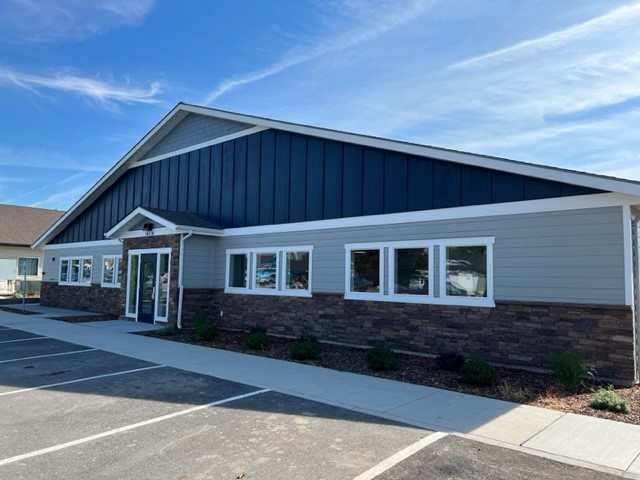When it comes to attention deficit disorders, the terms ADD (Attention Deficit Disorder) and ADHD (Attention Deficit Hyperactivity Disorder) are often used interchangeably. However, understanding the nuances between these two conditions is crucial for accurate diagnosis and effective treatment.
In this blog, we will explore the key differences in symptoms between ADD vs ADHD in Spokane, Washington, shedding light on the distinct characteristics and challenges associated with each. By examining how these conditions affect daily life, behavior, and focus, we hope to provide clarity for individuals, parents, and professionals navigating the complexities of attention-related disorders.
Additionally, we will discuss treatment approaches and available resources in Spokane, offering valuable insights into local mental health services that can help you or your loved one manage symptoms more effectively and improve overall quality of life.
ADD vs ADHD Treatment in Spokane, Washington
ADD vs ADHD: The Definitions
To understand the confusion and the difference between ADD and ADHD, we can start with definitions of these terms. ADD (Attention Deficit Disorder) is often used as a colloquial term for ADHD, a predominantly inattentive subtype. In formal diagnostic terms, ADHD (Attention Deficit Hyperactivity Disorder) is the preferred and more comprehensive term, while ADD is considered to be outdated.

To offer further clarification, here are three subtypes of ADHD:
Predominantly Inattentive Subtype: The main characteristics of this subtype are significant difficulties with attention and organization. The predominantly inattentive type is what can be considered for ADD.
Predominantly Hyperactive-Impulsive Subtype: Although some attention problems are present, this subtype is heavily marked by prominent hyperactivity and impulsivity, which are not part of ADD symptomatology.
Combined Subtype: As the name suggests, this subtype involves a combination of both inattentive and hyperactive-impulsive symptoms. The hyperactivity element is what sets it apart from what was previously known as ADD.
While ADD and ADHD may seem similar, the distinction lies in the inclusion of hyperactivity and impulsivity as core features of ADHD.

ADD vs ADHD: The Symptoms
ADD and ADHD share difficulties with attention, though they might manifest slightly differently. As mentioned before, hyperactivity is not a characteristic of ADD, which is why the rest of the symptomatology differs.
Get Help. Get Better. Get Your Life Back.
Searching for Accredited Dual Diagnosis Mental Health Centers Near You?
Even if therapy failed previously, or are in the middle of a difficult crisis, we stand ready to support you. Our trusted behavioral health specialists will not give up on you. When you feel ready or just want someone to speak to about counseling alternatives to change your life call us. Even if we cannot assist you, we will lead you to wherever you can get support. There is no obligation. Call our hotline today.
FREE 24/7 Dual Diagnosis Mental Health Services HotlineADD symptoms:
- Inattention: having difficulties sustaining attention and focusing on tasks
- Distractibility: getting easily distracted by external stimuli
- Organization problems: struggling with organizing tasks, materials, and thoughts
- Forgetfulness: Frequently forgetting important details and being prone to losing things
- Daydreaming: being inattentive in situations or frequently appearing lost in thoughts
ADHD Symptoms:
- Inattention: experiencing difficulties sustaining attention and being easily distracted
- Hyperactivity: Not being able to stay still, constant fidgeting, and excessive restlessness
- Impulsivity: interrupting others, having difficulties waiting for their turn, as well as acting without thinking
- Poor impulse control: Engaging in risky behaviors without considering the consequences
- Excessive talking: Frequently talking excessively or blurting out answers before a question is completed
From these lists, we can conclude that ADD basically includes ADHD inattentive type symptoms, which is why ADD vs ADHD confusion still takes place. Having these symptoms in mind, here is a short overview that helps recognize either of these conditions:
- People with ADD present a predominantly inattentive presentation of the condition, meaning they will have difficulties keeping focus and attention and, therefore, organizing themselves or completing a task. This can lead to academic, professional, and personal difficulties. They may also struggle to follow instructions, make careless mistakes, and appear daydreamy and forgetful.
- People with ADHD, however, will, in addition to these signs, show hyperactive and impulsive behaviors. Usually, a constant need for movement is present, and they might show impulsive and risky behaviors without considering the consequences. They also tend to lose interest quickly.
ADD vs ADHD: The Diagnosis
Another significant difference between ADD and ADHD lies in the diagnostic criteria, which often becomes a central point of confusion in the ongoing ADD vs ADHD debate. The confusion largely stems from the way the DSM-5 (Diagnostic and Statistical Manual of Mental Disorders, Fifth Edition) defines and classifies ADHD. According to the DSM-5, for an adult to be diagnosed with ADHD, they must present with five or more symptoms of inattention and/or hyperactivity-impulsivity. These symptoms need to persist for at least six months and interfere with daily functioning across multiple settings, such as work, school, or social situations.
The issue here is that the DSM-5 no longer recognizes ADD as a separate condition. Instead, it places ADD under the umbrella of ADHD with an inattentive presentation. This makes it harder for individuals, families, and even professionals in Spokane and beyond to distinguish between the two terms. For example, when someone primarily struggles with focus, organization, and sustained attention but does not display noticeable hyperactivity, they are technically experiencing ADHD, inattentive type—what people often still call ADD.
This diagnostic overlap can be particularly challenging when it comes to gender differences. Research shows that women are more likely to display inattentive symptoms—such as forgetfulness, disorganization, or daydreaming—without the outward hyperactivity that is more commonly observed in men. As a result, women with ADHD may appear to fit the older description of ADD, which further reinforces the misconception that the two are separate conditions. Unfortunately, this misunderstanding has led to many women being underdiagnosed or misdiagnosed, since their symptoms are less disruptive and therefore less likely to attract clinical attention.
In Spokane, Washington, as in many other regions, this confusion underscores the importance of seeking a thorough evaluation from a qualified mental health professional who understands the nuances of the DSM-5 criteria. Accurate diagnosis ensures that individuals receive the right support, whether through behavioral therapy, medication, or a combination of treatment approaches. Clarifying these diagnostic standards is essential not only for effective treatment but also for reducing the stigma and misunderstandings surrounding ADD vs ADHD.
There are additional troubles with diagnosing ADHD. For instance, for adults to be diagnosed with it, they had to show signs before the age of 12. The person in charge of diagnosing ADHD must consult school records and interview parents or other relevant parties to understand whether signs of ADHD existed in childhood. Additionally, ADHD in adults, especially if not recognized and treated earlier, tends to have comorbidities, mostly with mood disorders such as depression and anxiety disorders. These disorders can mimic ADHD and can be either caused by it or develop for an entirely different reason.
End the Emotional Pain. Get Your Life Back.
Feeling Depressed, Anxious or Struggling with Mental Health Illness? Get Safe Comfortable Mental Health Dual Diagnosis High-Quality Therapy From Counselors That Care. Begin Your Recovery Now.
Hotline: (509) 348-4077

Professionals play a key role in diagnosing any of these conditions. There is no single test for ADHD, so experts combine different information to determine whether someone is struggling with ADD or ADHD. Diagnosing involves a comprehensive evaluation, interviews, and often record analysis.
Observed symptoms ought to be compared with the DSM-5 criteria. As ADD and ADHD were combined into one disorder in the fourth edition of the DSM, an official diagnosis of ADD cannot be set. The severity of symptoms and their occurrence in different settings is important for both drawing conclusions about diagnosis and making a choice about therapy.

ADD vs ADHD: The Treatments
The type and severity of symptoms exhibited will determine the choice of therapy. Treatment approaches can include medication, psychotherapy, training and education, and support strategies. Any treatment should be tailored to address the specific needs of individuals based on their diagnosis.
Those looking for an ADHD treatment Washington can count on several types of FDA-approved medications, which are divided into two groups:
- Stimulants – the most widely used ADHD medications. They are fast-acting and reduce symptoms significantly.
- Nonstimulants – they do not work as quickly as stimulants, but their effect can last up to 24 hours.
When it comes to treatment, one of the most important things to understand is that the ADD vs ADHD distinction does not significantly change the medical approach. Since the term ADD is now classified as the inattentive subtype of ADHD, the same medications are used across all three subtypes: inattentive, hyperactive-impulsive, and combined type. This means that whether someone identifies with ADD or ADHD, the recommended medical treatments are essentially the same.
Stimulant medications remain the most commonly prescribed and effective option for ADHD management. These include well-known names such as methylphenidate (Ritalin, Concerta) and amphetamines (Adderall, Vyvanse). Stimulants work by increasing levels of certain neurotransmitters in the brain—primarily dopamine and norepinephrine—which play a crucial role in attention, focus, motivation, and self-regulation. For individuals struggling with inattention (often labeled as ADD), stimulants can significantly improve concentration, task completion, and overall productivity.
For those who may not respond well to stimulants or experience side effects, non-stimulant medications and antidepressants are also used. Non-stimulant options, such as atomoxetine (Strattera) or certain alpha-2 agonists (like guanfacine and clonidine), can be helpful in improving attention and reducing impulsivity without the stimulating effects. Antidepressants, such as bupropion (Wellbutrin), may also be prescribed, particularly if ADHD coexists with conditions like anxiety or depression.
Regardless of whether the condition is described as ADD or ADHD, these medications work by balancing brain chemicals that regulate mood, concentration, energy, and alertness. By enhancing neurotransmitter activity, they help individuals better manage daily tasks, maintain focus at work or school, and reduce the mental fatigue that often comes with untreated ADHD symptoms.
For residents of Spokane, Washington, access to proper medical evaluation and treatment is key. Consulting with a licensed psychiatrist or healthcare provider ensures that the right medication is prescribed and monitored carefully, taking into account individual needs, medical history, and potential side effects. Since treatment is highly personalized, what works best for one person may differ for another, making professional guidance essential in navigating the complexities of ADD vs ADHD treatment.
The psychotherapy approach can be somewhat different for ADD and ADHD, as it is always tailored to one´s needs and can address different manifestations of these conditions. Practically, this means that someone with predominantly inattentive symptoms, or what used to be considered for ADD, will work on their focus strategies, lack or loss of interest, or daydreaming. Someone with hyperactive manifestation, or what is typically considered for ADHD, will, in addition to inattentiveness, address the constant need to move or proneness to risky behavior.
Evidence-based approaches can help you regain control over your behavior. Cognitive-behavioral therapy (CBT), with its analysis of thinking and behaving patterns, can discover triggering situations and contexts for impulsive behavior or loss of focus. It also helps establish new, adaptive patterns of reacting, which can help with strategies in everyday life.
Dialectic-behavioral therapy (DBT) focuses on acceptance vs. change and assists people with accepting themselves as they are while also making small efforts to change certain manifestations of their condition that are otherwise affecting their professional and emotional lives. Finally, group therapy and support groups provide acceptance and a sense of belonging. These occasions are beneficial in many ways, one of which is hearing about how others dealt with certain symptoms and trying to implement their strategies in your own life.
Comfortable Facilities & Amenities
High-Quality Mental Health Services & Behaviroal Health Substance Abuse Treatment
Rehab Centers TourRenowned Mental Health Centers. Serene Private Facilities. Inpatient Rehab Programs Vary.
Mental Health Helpline: (509) 348-4077Proven recovery success experience, backed by a Team w/ History of:
15+
Years of Unified Experience
100s
5-Star Reviews Across Our Centers
10K
Recovery Success Stories Across Our Network
- Low Patient to Therapist Ratio
- Comprehensive Dual-Diagnosis Treatment
- Complimentary Family & Alumni Programs
- Coaching, Recovery & Development Events
- Comfortable Onsite Medical Detox Center
ADD vs ADHD: The Impact on Daily Life
ADHD is one of the most common neurodevelopmental disorders, affecting approximately 5–10% of children and 2–5% of adults worldwide. It was more commonly diagnosed in men than women. However, recent research shows that men and women experience different symptoms (female symptoms are more similar to ADD), which is why ADHD was often misdiagnosed in women.
Untreated ADD/ADHD will undoubtedly impact one´s life, especially if it is diagnosed later in life. While some symptoms may persist from childhood into adulthood, there are also unique challenges that adults face. Below are some key considerations.
Recognition and Diagnosis
ADD/ADHD symptoms in adults can be overlooked or misattributed to other causes. Inattentive, less disruptive, and more internal symptoms may go unrecognized, especially in girls and women. This can result in a delayed diagnosis or individuals seeking support only when encountering difficulties in various areas.
Delays in treatment can result in poor academic performance at a young age due to inattentiveness or risky behavior due to hyperactivity, both of which can have long-term consequences.
Improved Coping Skills
With age, individuals with ADD/ADHD may develop better coping mechanisms and strategies to manage their symptoms. However, these skills may not be effectively utilized without proper diagnosis and treatment, leading to ongoing challenges. Inattentive types can still struggle in relationships, while hyperactive types can suffer in work-related situations if their strategies are misplaced.
Impact of Responsibilities
ADHD and ADD in adults often involve increased responsibilities in various domains of life, such as work, relationships, and finances. The sense of having more responsibilities can come from the daily inner struggle to provide society with what does not come naturally to them (e.g., attention). This can further amplify the impact of symptoms.
Difficulties with organization, time management, and impulsivity can have more significant consequences, affecting job performance, financial stability, and interpersonal relationships. These effects can, in turn, impact overall mental health.
Co-occurring Mental Health Conditions
Adults with ADD/ADHD may also experience co-occurring mental health conditions like anxiety and depression. Mood disorders can either develop because of ADD/ADHD, or they can occur for another reason. These conditions can interact with and worsen ADD/ADHD symptoms. They can also mimic some symptoms of ADD/ADHD and complicate diagnosis in adults.
Environmental and Life Factors
Stressors and demands in adulthood, such as career pressures, financial obligations, and relationship dynamics, can contribute to changes in ADD/ADHD symptoms. Increased stress levels and demanding environments may make it more difficult to manage symptoms effectively.
Parents and the school environment often play a key role in childhood, but if ADD/ADHD is not recognized until adulthood, the usual stressors from childhood and adolescence can have a significant negative impact on self-esteem and self-efficacy.

Get Help for ADHD and ADD
We started with a question: are ADD and ADHD the same? It might seem that the ADD vs ADHD debate is irrelevant since the DSM-5 combined them into a single disorder, and you can only be officially diagnosed with ADHD. However, understanding the difference between ADD and ADHD and their symptoms can bring you peace of mind when looking for mental health services and mental health hospitals near me.
Whether predominantly inattentive or hyperactive, ADHD is a treatable condition. Once your diagnosis is set and you get proper treatment, you can live a fulfilled life. Early intervention and ongoing management can significantly reduce the impact of symptoms and improve overall functioning. We at Level Up Washington can help you develop skills and get proper treatment. Call us and regain control over your life.
World-class, Accredited, 5-Star Reviewed, Effective Mental Health Dual Diagnosis Programs. Complete Integrated Inpatient Rehab with Free Post Discharge Therapy Planning.
Hotline: (509) 348-4077End the Emotional Pain Rollercoaster. Gain Stability & Happiness Through Recovery Treatment. Start Mental Health Counseling Today. Get Free No-obligation Guidance by Behaviroal Health Specialists Who Understand Mental Health Recovery.
Popular ADD vs ADHD FAQs
-
What’s the difference between ADD and ADHD?
The main difference between ADD (Attention Deficit Disorder) and ADHD (Attention Deficit Hyperactivity Disorder) is that ADD primarily focuses on attention-related difficulties. In contrast, ADHD, in addition to that, includes hyperactivity and impulsivity as core symptoms.
-
Do I have ADD or ADHD?
A healthcare professional can provide an accurate diagnosis of whether you have ADD (Attention Deficit Disorder) or ADHD (Attention Deficit Hyperactivity Disorder) based on a comprehensive evaluation of your symptoms.
-
Can you have ADD and ADHD?
Yes and no. ADD and ADHD are terms used interchangeably to refer to the same condition. Technically, if you have the inattentive type of ADHD, you have what used to be considered ADD.
Watch How to Improve Mental Health? 8 Steps & Tips for Maintaining Your Mental Wellbeing.
Experience Transformative Recovery at the We Level Up Treatment Center.
See our authentic success stories. Get inspired.
Get the help you deserve.



Start a New Life
Begin with a free call to a behavioral health treatment advisor. Learn more about our dual-diagnosis programs. The We Level Up treatment center network delivers recovery programs that vary by each treatment facility. Call to learn more.
- Personalized Care
- Caring Accountable Staff
- World-class Amenities
- Licensed & Accredited
- Renowned w/ 5-Star Reviews
We’ll Call You
Skip To:
Search We Level Up WA Mental Health ADD vs ADHD Topics & Resources
Sources
Faraone, Stephen V., et al. “Attention-Deficit/Hyperactivity Disorder.” Nature Reviews Disease Primers, vol. 1, no. 15020, 6 Aug. 2015, p. 15020, www.nature.com/articles/nrdp201520, https://doi.org/10.1038/nrdp.2015.20.
Magnus, Warren, et al. “Attention Deficit Hyperactivity Disorder (ADHD).” PubMed, StatPearls Publishing, 2020, www.ncbi.nlm.nih.gov/books/NBK441838.
CDC. “Treatment of ADHD.” Attention-Deficit / Hyperactivity Disorder (ADHD), 15 May 2024, www.cdc.gov/adhd/treatment/index.html.
“Attention Deficit Hyperactivity Disorder (ADHD).” Www.samhsa.gov, 8 Feb. 2023, www.samhsa.gov/mental-health/attention-deficit-hyperactivity-disorder.
Fairbank, Rachel. “An ADHD Diagnosis in Adulthood Comes with Challenges and Benefits.” Apa.org, 2023, www.apa.org/monitor/2023/03/adult-adhd-diagnosis.




